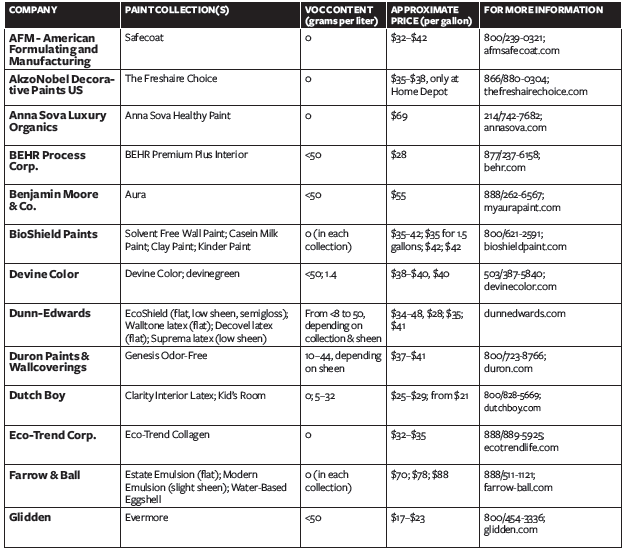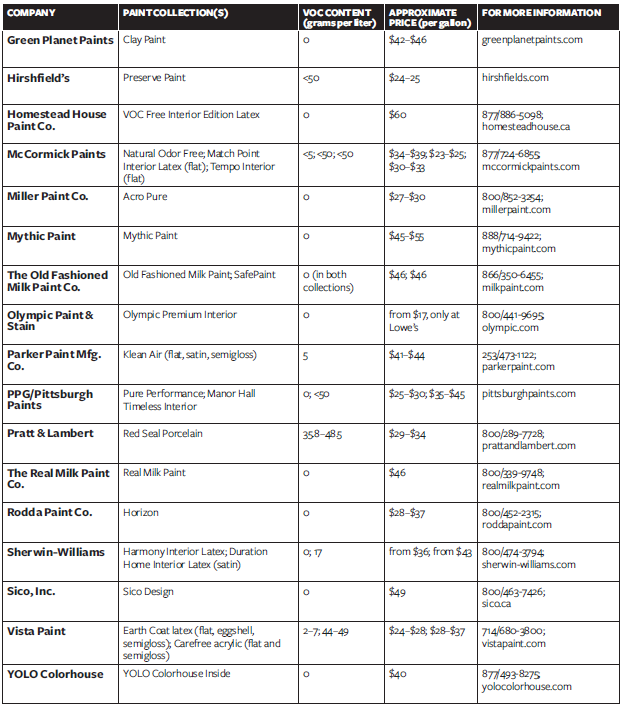 If you've done an interior house painting project lately there's a good chance you heard your painting contractor, or a paint store employee, talk about "green" or "low-VOC" products. These health conscious, environmentally-friendly coatings have become a huge part of the modern painting landscape. And with all of the talk about them that I'm used to hearing in our industry, I suppose I just assumed that most homeowners shared our enthusiasm for the benefits that this new technology provides.
If you've done an interior house painting project lately there's a good chance you heard your painting contractor, or a paint store employee, talk about "green" or "low-VOC" products. These health conscious, environmentally-friendly coatings have become a huge part of the modern painting landscape. And with all of the talk about them that I'm used to hearing in our industry, I suppose I just assumed that most homeowners shared our enthusiasm for the benefits that this new technology provides.
But a few days ago I came across an article in American Painting Contractor magazine where they had conducted a survey of 2,000 U.S. consumers on this very subject. What I read from this poll tells me that, as an industry, we're doing a terrible job of speaking in a language that people understand about the benefits of these new paints.
In fact, only 21% of the folks surveyed said that they understood what "low-VOC" meant. While 67% rated their understanding as neutral, and 12% said they had no understanding of the term. However, it was obvious that what "low-VOC" paints are designed to do is indeed important to homeowners, as 2/3 of those surveyed said that they were at least moderately concerned about the indoor air quality in their home.
Clearing The Air About VOC's
VOC's, or Volatile Organic Compounds, are organic chemicals that are emitted as gases from certain types of solid and liquid products. And these gases can have a potentially negative effect on our health. VOC's are found in a wide variety of common household products such as:
- paints, paint strippers, and other solvents
- wood preservatives
- common household building materials
- aerosol sprays
- cleaners and disinfectants
- moth repellents and air fresheners
- stored fuels and automotive products
- hobby supplies
- dry-cleaned clothing
- pesticides
Because these products are so prevalent in our homes, most of us have significantly increased levels of VOC's inside the home compared to outdoors...on average of 2-5 times higher levels than found outside; in some cases much higher even than that.
Now it would be virtually impossible to eliminate VOC's from our modern day homes, but that doesn't mean we shouldn't make an effort to reduce our exposure to them. Without a doubt, as a result of progressively tightening governmental restrictions, as well as pressure from consumers, house paints are healthier than they have ever been. But how do I know if my paint is really Low or No VOC?
How Do I Know If My Paint Is Low-VOC or No-VOC?
Do a quick search of the internet and you'll see different sites and articles defining the criteria for Low & No VOC's very differently -- depending on the age of the article, which State they may be referring to (because different States have different regulations), who the author of the article is representing, and which industry-specific products they're discussing.
The VOC level in any paint is measured by 'grams per liter'. Some sources will tell you that a paint with less than 250 grams per liter is considered low-VOC, while others will claim 150, and so on.
For the purposes of this article we're going to base our criteria on Greenguard.org's Guide To Low & Zero VOC Paints From Better Homes and Gardens® magazine which states:
"The number generally accepted for a low-VOC paint is less than 50 grams per liter; a zero-VOC paint has fewer than 5 grams per liter. In general, lower VOC amounts are found in paint that is latex (rather than alkyd), with a flat (rather than glossy) sheen, and is a light color, but individual formula variations can make it difficult to compare. In all cases, though, VOC amounts on labels don’t currently include VOCs in colorants added at the store. For independent certifications and standards, see greenseal.org and greenguard.org (which measures VOC emissions)."
So, if we're using these standards as our guide, we need to keep in mind that latex paints are going to be our healthiest choice. We need to also understand that with many paints, the flatter the sheen the lower the VOC's. And finally, know that adding tint to our paint will generally increase the VOC's of the product, so the lighter the color choice the lower the levels.
Going Shopping For Paint
I'm again going to borrow this from Greenguard.org's guide which gives a comparison of top paint manufacturer's low & no-VOC products for your own comparison purposes when you're shopping for paint.


Now bear in mind that this guide was created in 2008 so there are more product options available to you now, but this was the most comprehensive guide that I could find so it should at least give you a good place to start.
Here's their disclaimer:
"Use this chart to help you compare your options. Only companies with verified information on paint that has a VOC content of 50 grams per liter or less are included. Information is subject to change; be sure to check each manufacturer’s Web site for the most current information."
If you're located in the Greater Tampa, Florida area and you need assistance with you painting project please give us a call at (813) 570-8800, visit our Contact Us page, or click on the button below to request a free, no-obligation consultation and quote.

photo: CC BY 2.0







 If you've done an
If you've done an 


